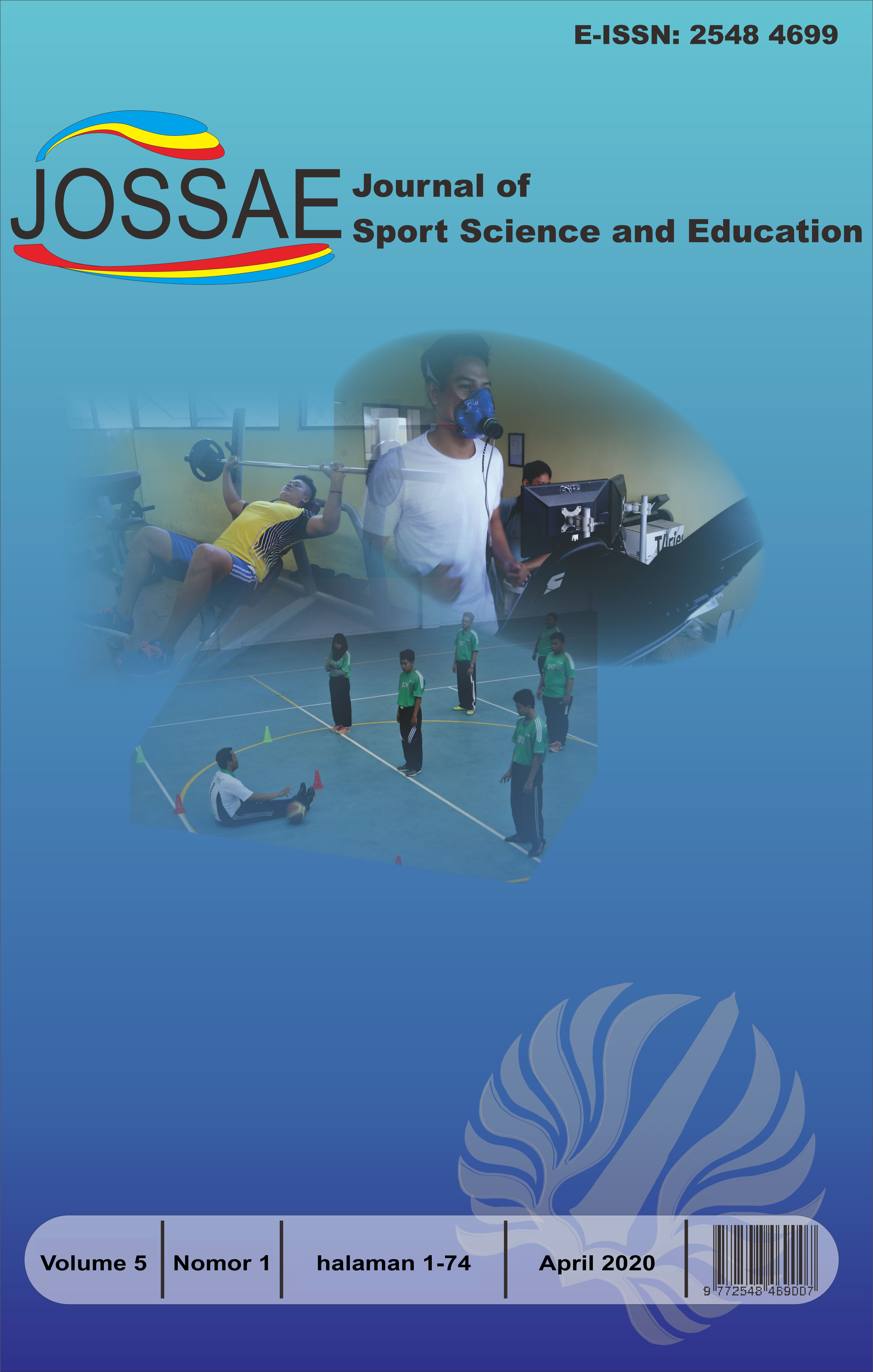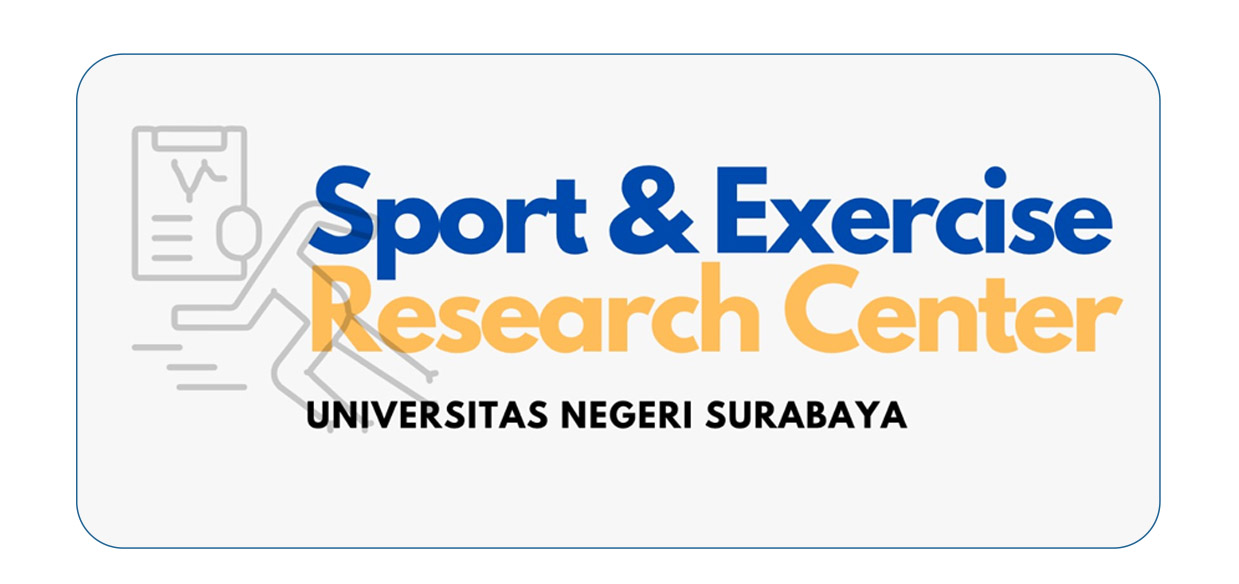Kapasitas Vital Paru Berkorelasi Positif dengan Kemampuan Tahan Nafas pada Laki-Laki Usia 19-25 Tahun
DOI:
https://doi.org/10.26740/jossae.v5n1.p25-32Keywords:
apnea, diving, freedive, lung, vital capacityAbstract
Freediving is a diving activity without any breathing equipments. The durations of the dive activity depend on ability to hold breath (apnea). The ability of apnea may be affected by lung vital capacity. The purpose of this study is to find out the relationship between vital lung capacity and apnea duration in 30 males 19-25 years old. Vital lung capacity measured using spirometer and the duration of apnea measured using stopwatch in swimming pool. Data analyzed using 1-tailed pearson correlation test. The result shows that there is a correlation (p<0,05) between vital lung capacity and the duration of apnea. The correlation coeficient is 0,743 that means this is a strong positive correlation between the two variables.
References
Bosco, G., Rizzato, A., Moon, R. E., & Camporesi, E. M. (2018). Environmental Physiology and Divng Medicine. Frontiers in Psychology, 9(FEB), 72. https://doi.org/10.3389/fpsyg.2018.00072
Butler, F. (2005). Breath-Hold Diving-A Proposed 60-second Rule. United State.
Cafaro, R. P. (1960). Hypoxia: Its Causes and Symptoms. Journal of the American Dental Society of Anesthesiology, 7(4), 48. Retrieved from http://www.ncbi.nlm.nih.gov/pubmed/19598857
Christen, O. (2015). Aida2 Freediving Manual. France.
Dahlan, M. S. (2015). Statistik untuk kedokteran dan kesehatan. Epidemiologi Indonesia. Jakarta.
Erez, B. (2016). Stage freediving enjoy the silence (B). Australia: Apnea International.
Giriwijoyo, H. Y. S. S. (2017). Fisiologi Kerja dan Olahraga. Jakarta: Rajawali Pers.
Guyton, A. C., & Hall, J. E. (2006). Textbook of Medical Physiology (11th ed.). Philadelphia: Elsevier Inc.
Kahar, F. (2017). Pengaruh Latihan Aerobik.
Lindholm, P., & Lundgren, C. E. (2009). The physiology and pathophysiology of human breath-hold diving. Journal of Applied Physiology, 106(1). Retrieved from http://jap.physiology.org/content/106/1/284.short
McArdle, W. D., Katch, V. L., & Katch, F. I. (2009). Exercise Physiology: Nutrition, Energy, and Human Performance (7th ed.). United States: Lippincott Williams & Wilkins.
Morris, J. F. (1976). Spirometry in the evaluation of pulmonary function. Western Journal of Medicine, 125(2), 110118.
Ostrowski, A., Strzała, M., Stanula, A., Juszkiewicz, M., Pilch, W., & Maszczyk, A. (2012). The role of training in the development of adaptive mechanisms in freedivers. Journal of Human Kinetics, 32, 197210. https://doi.org/10.2478/v10078-012-0036-2
Pearn, J. H., Franklin, R. C., & Peden, A. E. (2015). Hypoxic blackout: Diagnosis, risks, and prevention. International Journal of Aquatic Research and Education, 9(3), 342347.
https://doi.org/10.1123/ijare.2015-0036
Perlman, J. M. (2007). Pathogenesis of hypoxic-ischemic brain injury. Journal of Perinatology, 27(1), S39S46. https://doi.org/10.1038/sj.jp.7211716
Putra, K. P., Al Ardha, M. A., Kinasih, A., & Aji, R. S. (2017). Korelasi Perubahan Nilai VO2Max, Eritrosit, Hemoglobin dan Hematokrit Setelah Latihan High Intensity Interval Training.
Jurnal Keolahragaan, 5(2), 161170.
Putra, K. P., & Haridito, I. (2013). Pengaruh Program Pelatihan Fisik Militer Terhadap Peningkatan
VO2Max Siswa Pendidikan Pertama Tamtama Tentara Nasional Indonesia Angkatan Laut. Jurnal Kesehatan Olahraga, 1(1). Retrieved from http://jurnalmahasiswa.unesa.ac.id/index.php/jurnalkesehatan-olahraga/article/view/1922
Schödel, J., & Ratcliffe, P. J. (2019, October 1). Mechanisms of hypoxia signalling: new implications for nephrology. Nature Reviews Nephrology. Nature Publishing Group.
https://doi.org/10.1038/s41581-019-0182-z
Sewa, D. W., & Ong, T. H. (2014). Pulmonary function test: Spirometry. Proceedings of Singapore Healthcare, 23(1), 5764. https://doi.org/10.1177/201010581402300110
Sherwood, L. (2015). Fisiologi Manusia: Dari Sel ke Sistem. (D. R. Herman Octavius Ong, Albertus Agung Mahode, Ed.) (8th ed.). Jakarta: EGC.
West, J. B. (1999). The original presentation of Boyles law. Journal of Applied Physiology, 87(4), 15431545. https://doi.org/10.1152/jappl.1999.87.4.1543.
Downloads
Published
How to Cite
Issue
Section
 Abstract views: 3790
,
Abstract views: 3790
, PDF Downloads: 14571
PDF Downloads: 14571









